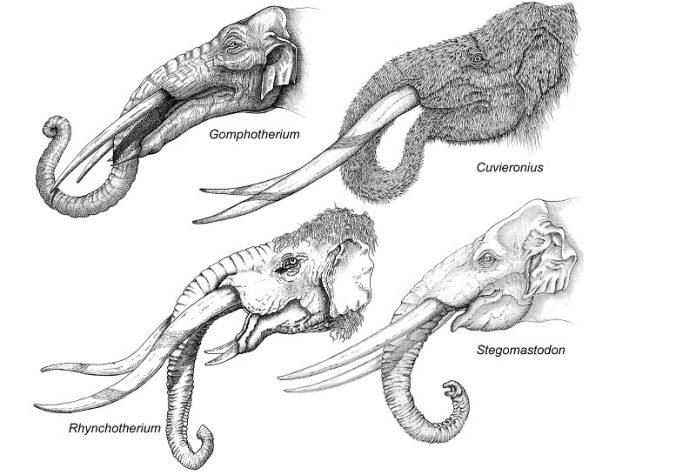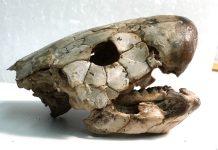
Around five and a half million years ago, a remarkable event unfolded in what is now North Florida.
Several gomphotheres, fascinating relatives of elephants, met their fate near a river, and their remains, along with those of other animals, were preserved in a single location.
Recently, an extraordinary discovery was made at the Montbrook Fossil Dig site, providing paleontologists with an unparalleled glimpse into prehistoric Florida.
This article delves into the exciting findings at Montbrook, shedding light on the lives of these ancient giants.
In early 2022, a team led by Jonathan Bloch, curator of vertebrate paleontology at the Florida Museum of Natural History, stumbled upon portions of a gomphothere skeleton at Montbrook. What initially seemed like a typical discovery soon turned into something extraordinary.
A volunteer unearthed an articulated foot of an enormous creature nearby, leading to the realization that not just one, but several complete skeletons were present. The findings included an adult gomphothere and at least seven juveniles, awaiting further excavation to determine their exact size.
The Montbrook Fossil Dig site has been a treasure trove for paleontologists since 2015. Fossils found in its fine sands and compacted clays paint a vivid picture of Florida’s prehistoric past.
The remains of camels, rhinoceroses, llamas, and various aquatic creatures—such as fish, turtles, alligators, and shrimp—provide insights into a time when Florida was closer to the sea, boasting higher temperatures and sea levels.
The diverse collection also includes fossils of ancient marine species, including sharks, owing to the underlying limestone formation.
Montbrook has yielded numerous extraordinary finds over the years. The oldest deer in North America, the oldest known skull of a smilodontine sabertoothed cat, and a new species of extinct heron are just a few examples.
While scattered fossils of bone-crushing dogs and short-faced bears are common, finding several complete gomphotheres was completely unexpected. Normally, only fragments of skeletons are found at this site, making this recent discovery all the more significant.
Gomphotheres, part of the proboscidean family that includes elephants, once roamed various continents before human arrival. With an evolutionary history spanning over 20 million years, gomphotheres evolved diverse features that allowed them to thrive in different environments.
Unlike their more familiar counterparts, such as the woolly mammoths, gomphotheres had unique tusks that varied in shape and size. Some species even sported a second set of tusks attached to the lower jaw, with increasingly unusual configurations.
By closely examining the tusks of the gomphotheres discovered at Montbrook, paleontologists like Rachel Narducci, collection manager of vertebrate paleontology at the Florida Museum, were able to identify the fossils as belonging to the genus Rhyncotherium.
This genus was once widespread across North and Central America. The spiral band of enamel along the tusks, reminiscent of a barber’s pole, is a distinctive feature that allowed researchers to narrow down the identification.
Gomphotheres thrived in open savannahs that dominated various continents. However, a period of global cooling approximately 14 million years ago resulted in the expansion of grasslands, replacing the savannahs.
This shift, combined with the arrival of new proboscidean species like mammoths and elephants, led to the decline of gomphotheres. The last surviving gomphotheres vanished at the end of the ice ages due to climate change and hunting by early humans.
The Montbrook discovery reinvigorates research on Rhyncotherium gomphotheres, offering scientists an invaluable opportunity to deepen their understanding of the diverse fauna that once inhabited North America.
The ongoing excavation aims to assemble the complete skeleton of a gomphothere, which will eventually be displayed alongside other iconic prehistoric giants like mammoths and mastodons at the Florida Museum of Natural History.
The extraordinary findings at Montbrook Fossil Dig in North Florida have unraveled the mysteries of gomphotheres, providing invaluable insights into prehistoric life.
These ancient giants, with their unique features and evolutionary adaptations, roamed the open landscapes of Florida millions of years ago.
The discovery of several complete skeletons, including an adult gomphothere and juveniles, showcases the importance of paleontological research and the thrill of uncovering the secrets of our past.
Written by Jerald Pinson.
Source: Florida Museum of Natural History.



